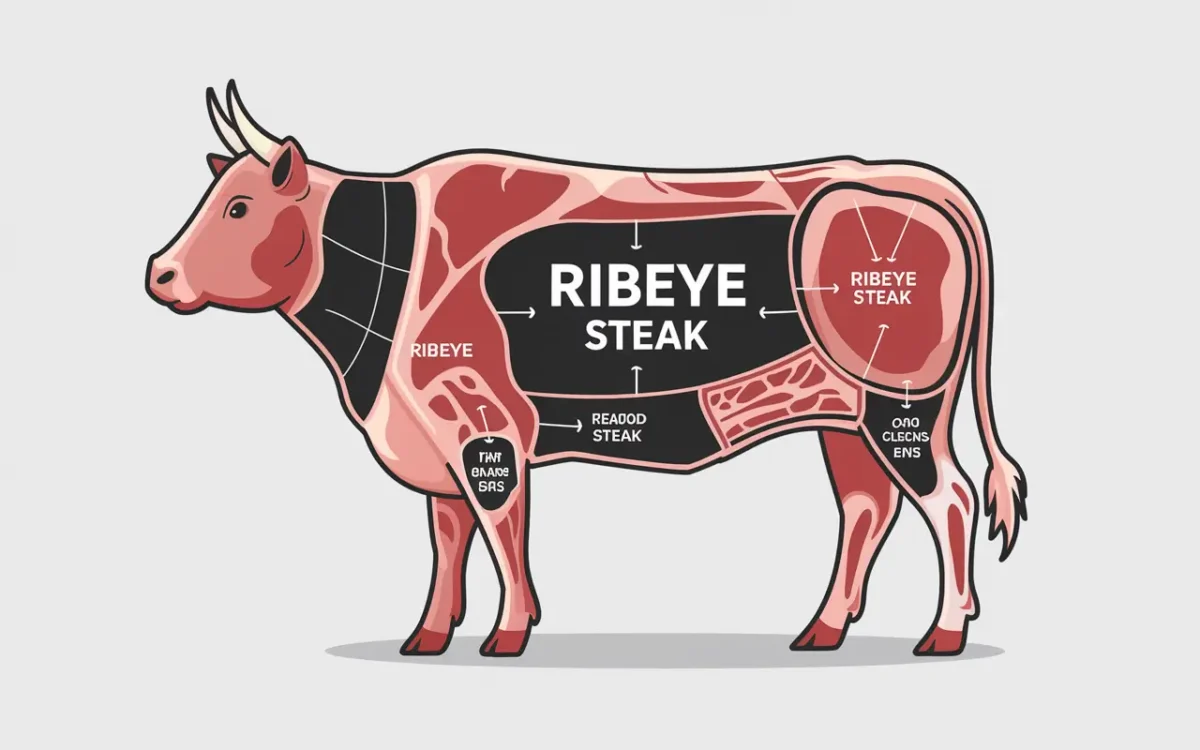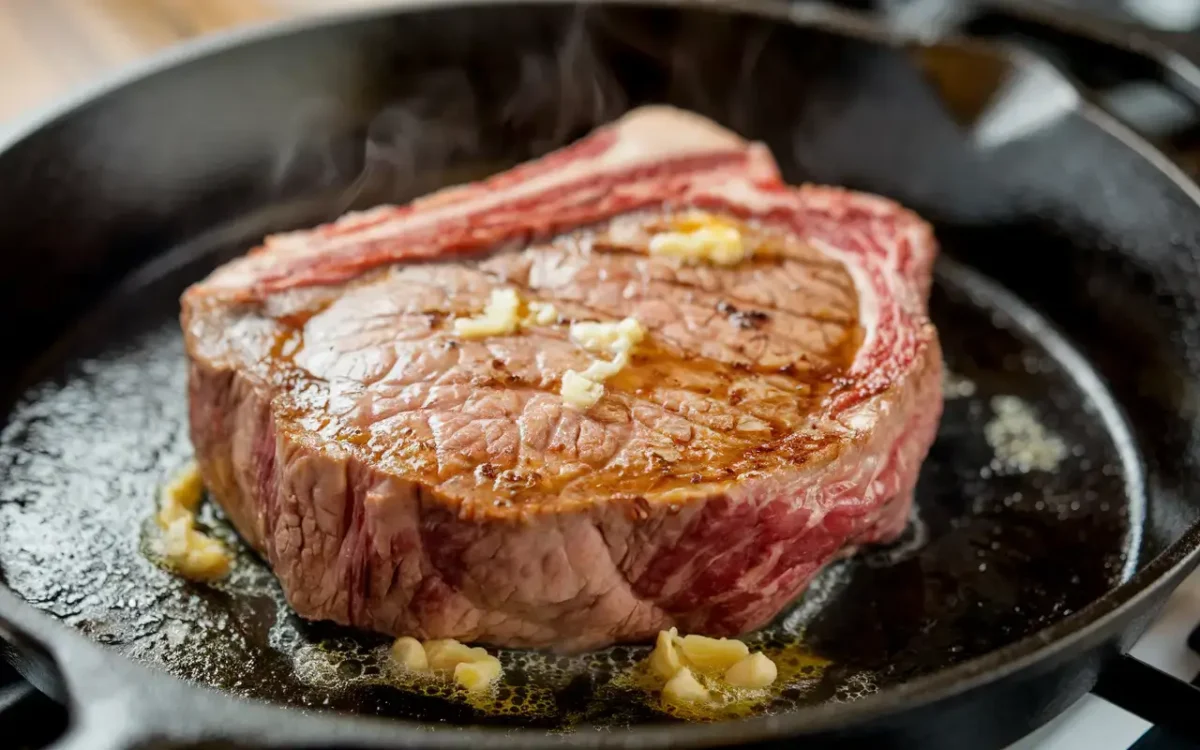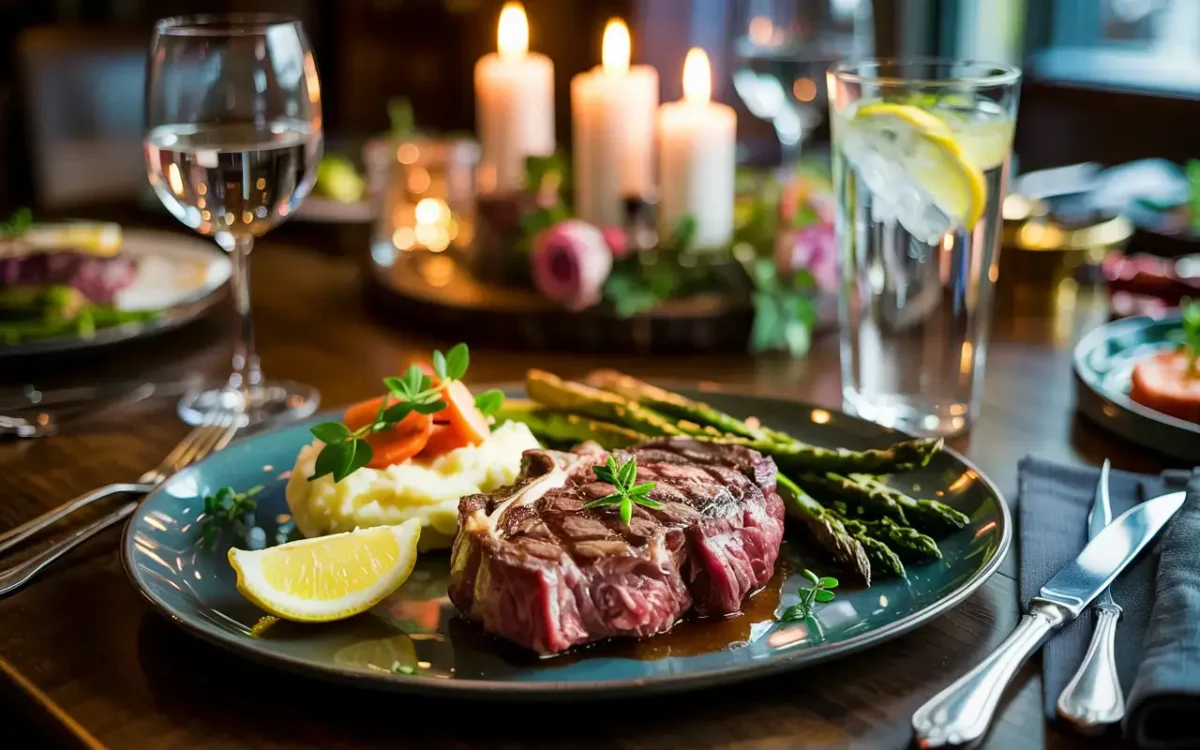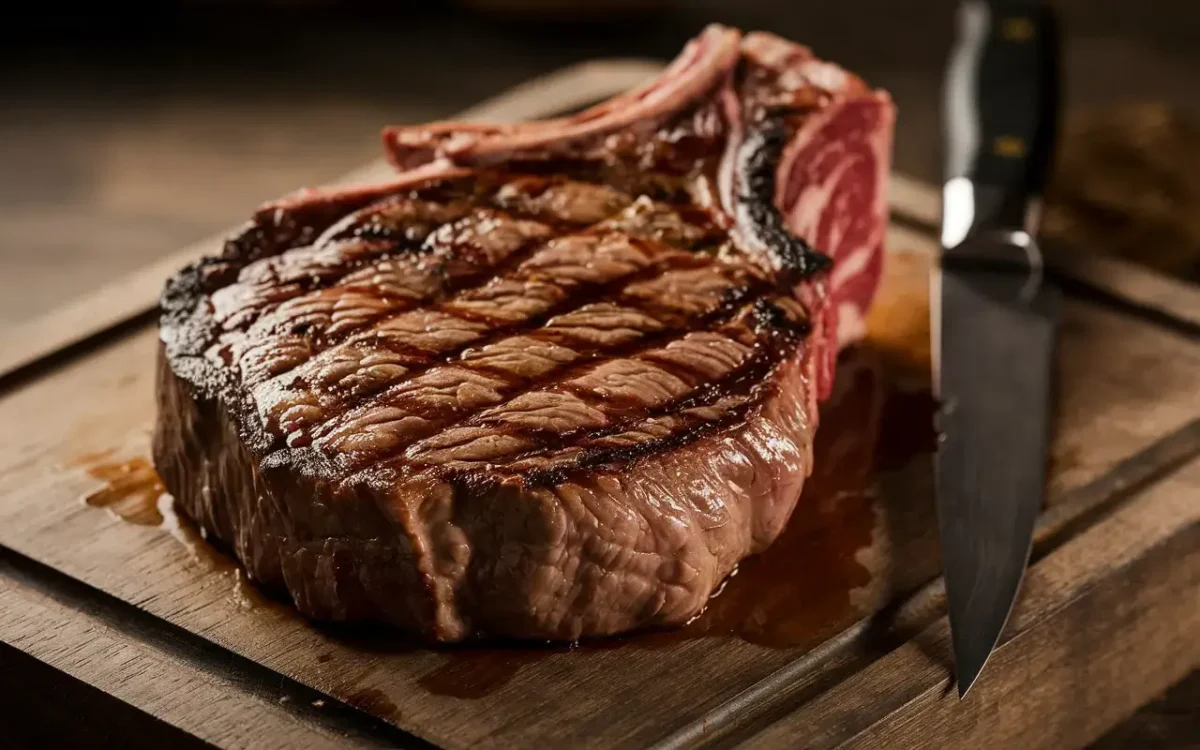The Ultimate Guide to Prime Ribeye
If you’re a steak lover, chances are you’ve already heard of the legendary prime ribeye. Known for its intense marbling, melt-in-your-mouth texture, and bold, beefy flavor, this premium cut of beef is often considered the crown jewel of steaks. But what exactly makes it so special? In this guide, we’re diving deep into the world of prime ribeye — from how it’s graded and where it comes from, to tips on cooking it to perfection and the differences between prime rib and ribeye. Whether you’re a seasoned grill master or just getting started, this juicy breakdown is everything you need to savor the best steak of your life.
Let’s kick it off by understanding what prime ribeye really is and why it stands out in a sea of steak options.
Introduction to Prime Ribeye
What is Prime Ribeye?
So, what’s all the fuss about prime ribeye? This cut comes from the rib section of the cow, specifically the sixth to twelfth ribs. The term “prime” refers to the USDA’s highest grade for beef, awarded to meat with superior marbling — that beautiful web of intramuscular fat that makes each bite juicy and flavorful. When you combine the ribeye’s naturally tender texture with the prime grade’s fat content, you get a steak that’s rich, buttery, and unforgettable.
Often confused with prime rib, the prime ribeye is actually a single steak, while prime rib is usually a larger roast. They’re from the same part of the cow, but they’re cooked and served differently.
Why Choose Prime Ribeye?
Why go for prime ribeye instead of other cuts like sirloin or strip? Simple — flavor and tenderness. Thanks to the heavy marbling, this cut packs a punch of umami-rich beefiness that’s hard to beat. Plus, it’s versatile. Whether you’re searing it in a pan or throwing it on the grill, a prime ribeye steak delivers big-time satisfaction.
From indulgent date nights to backyard BBQs, it’s the perfect steak when you want to impress. Oh, and did we mention it pairs fabulously with a bold red wine?
Understanding Beef Grading: Prime vs. Choice
USDA Beef Grading System
When selecting a prime ribeye, understanding the USDA beef grading system is crucial. The United States Department of Agriculture (USDA) evaluates beef quality based on factors like marbling—the intramuscular fat that enhances flavor and tenderness—and the animal’s age. The primary grades are Prime, Choice, and Select. Prime grade beef boasts abundant marbling, making it exceptionally juicy and flavorful. Choice grade offers less marbling but still delivers good quality, while Select grade is leaner and less tender.
Prime vs. Choice: What’s the Difference?
The distinction between Prime and Choice grades lies mainly in marbling content. Prime ribeye steaks feature extensive marbling, resulting in a richer taste and more tender texture. In contrast, Choice ribeye steaks have moderate marbling, offering a balance between flavor and leanness. While Choice cuts can be delicious, they may require more careful cooking methods to achieve optimal tenderness.
Is Prime Ribeye Worth the Premium?
Opting for a prime ribeye often means a higher price point. However, the superior marbling translates to enhanced juiciness and flavor, providing a gourmet experience that’s hard to replicate with lower grades. For special occasions or for those who prioritize top-tier quality, investing in a prime ribeye can be well worth the premium.
Anatomy of a Prime Ribeye Steak
Where Does Ribeye Come From?

The ribeye steak is cut from the rib section of the cow, specifically spanning ribs six through twelve. This area is known for producing cuts with rich marbling and tenderness due to the minimal exercise these muscles receive. The prime ribeye is celebrated for its balance of meat and fat, contributing to its succulent flavor profile.
Marbling and Its Impact on Flavor
Marbling refers to the white flecks of intramuscular fat within the meat. In a prime ribeye, abundant marbling melts during cooking, infusing the steak with moisture and a buttery taste. This marbling is a key indicator of quality and directly influences the steak’s flavor and tenderness.
Bone-In vs. Boneless Ribeye
When selecting a prime ribeye, you have the option between bone-in and boneless cuts. A bone-in ribeye, often called a “cowboy steak,” is believed to offer enhanced flavor due to the marrow’s contribution during cooking. Additionally, the bone can help regulate temperature, allowing for more even cooking. Conversely, a boneless ribeye offers ease of preparation and carving, making it a convenient choice without compromising on taste.
Prime Ribeye vs. Prime Rib: Clarifying the Confusion
Defining Prime Ribeye and Prime Rib
While both prime ribeye and prime rib originate from the same section of the cow—the rib primal—their differences lie in the cut and preparation. The prime rib is a larger roast, often encompassing multiple rib bones, and is typically cooked as a whole piece. In contrast, the prime ribeye is sliced into individual steaks, focusing on the eye of the rib, known for its rich marbling and tenderness. cite turn news
Taste and Texture Comparison
The cooking methods significantly influence the flavor and texture of these cuts. Prime rib is usually roasted slowly, resulting in a tender, juicy meat with a robust beef flavor. On the other hand, prime ribeye steaks are often grilled or pan-seared at high temperatures, creating a caramelized crust that enhances their rich, buttery taste. cite turn search
Choosing Between Prime Ribeye and Prime Rib
Your choice between prime ribeye and prime rib depends on the dining occasion and personal preference. For an intimate dinner, a prime ribeye steak offers quick preparation and individual servings. Conversely, a prime rib roast is ideal for gatherings, providing a centerpiece dish that can be carved at the table, offering both visual appeal and communal enjoyment.
Cooking the Perfect Prime Ribeye Steak
Preparation Tips
To achieve a restaurant-quality marbled beef steak at home, start by bringing the steak to room temperature. This ensures even cooking. Pat the steak dry with paper towels to remove excess moisture, which aids in developing a desirable crust. Season generously with kosher salt and freshly ground black pepper to enhance the natural flavors. cite turn search
Preferred Cooking Methods

There are several methods to cook a marbled beef steak, each offering unique results:
- Pan-Searing: Heat a cast-iron skillet over high heat until smoking. Add a high smoke-point oil, place the steak in the skillet, and sear for 2-3 minutes per side to develop a rich crust. cite turn search
- Grilling: Preheat the grill to high heat. Grill the steak for 3-4 minutes per side for medium-rare, adjusting time based on desired doneness. cite turn search
- Reverse Searing: For thicker cuts, cook the steak in a low-temperature oven until it reaches an internal temperature of about 10-15°F below your target doneness. Then, sear it in a hot skillet for a minute per side to develop the crust. cite turn search
Achieving Desired Doneness
Using a meat thermometer ensures precision:
- Rare: 120-125°F
- Medium Rare: 130-135°F
- Medium: 140-145°F
Remember, the steak’s internal temperature will rise slightly during resting.
Resting and Serving
After cooking, transfer the steak to a cutting board and tent loosely with foil. Let it rest for 5-10 minutes to allow the juices to redistribute, ensuring a moist and tender result. Slice against the grain and serve with your choice of sides. cite turn search
This section provides detailed insights into distinguishing between prime ribeye and prime rib, along with expert tips on cooking the perfect prime ribeye steak.
Pairing Sides and Beverages with Prime Ribeye
Classic Side Dishes
When you serve a marbled beef, the right side dish can take your meal from good to unforgettable. While the steak is the star, sides like creamy mashed potatoes or garlic butter green beans complement its rich flavor perfectly. If you’re in the mood for something hearty, roasted root vegetables or truffle mac and cheese can really hit the spot.
Another timeless choice? A fresh, crisp salad with a tangy vinaigrette. It helps balance out the steak’s richness and adds a refreshing touch to your plate. And don’t forget about crusty bread to soak up those juicy drippings!
Wine and Beverage Pairings

A marbled beef steak calls for a bold beverage. A full-bodied lemonade . These lemon have just enough tannin to stand up to the steak’s marbling.
For non-alcoholic options, a sparkling grape juice or robust iced tea makes for a satisfying match. For expert tips on grilling asparagus to perfection, check out our Ultimate Guide to Grilled Asparagus for more search :https://www.allrecipes.com/search?q=Prime+Ribeye
Frequently Asked Questions About Prime Ribeye
What is prime ribeye steak?
A marbled beef steak comes from the rib section of a cow and is graded “Prime” by the USDA due to its abundant marbling. That marbling? It’s what gives the steak its melt-in-your-mouth goodness. Tender, juicy, and packed with beefy flavor — it’s everything a steak should be.
What tastes better, prime rib or ribeye?
This depends on how you like your meat. Prime rib is slow-roasted and juicy, perfect for large gatherings. Meanwhile, a prime ribeye steak is ideal for individual servings and has that crispy, seared crust we all crave. Both are delicious, but if you love a quick-sear and bold flavor, ribeye wins.
Is prime ribeye better than choice?
Yes — if flavor and tenderness matter to you. marbled beef has more marbling than Choice grade, resulting in a juicier and richer steak. Choice is still tasty, but Prime offers that next-level experience.
What is the prime cut of a ribeye steak?
The most prized section of the prime ribeye is the ribeye cap, also called the “spinalis dorsi.” It’s the most marbled and flavorful part — steak lovers often call it the best bite of beef.
Conclusion: Savoring the Prime Ribeye Experience
Recap of Prime Ribeye’s Appeal
In the world of steaks, few cuts can match the indulgent flavor and tenderness of a marbled beef. With its rich marbling, juicy texture, and bold beefy flavor, it’s no wonder this cut is a favorite among chefs and home cooks alike. Whether grilled, pan-seared, or roasted, it delivers a satisfying experience every time.
Encouragement to Explore and Enjoy
So why not treat yourself? Next time you’re planning a special meal, choose a prime ribeye. Experiment with cooking methods, sides, and wine pairings. Once you taste it, you’ll understand why it’s considered the king of steaks.
Meta Title & Description
Meta Title:
Perfect Prime Ribeye Steak Guide: Taste, Tips & FAQ
Meta Description:
Explore everything about prime ribeye — flavor, grading, cooking tips, and FAQs. Learn how to enjoy this juicy, top-tier steak at home!
And that’s a wrap on your marbled beef article! Let me know if you’d like a schema markup or to explore related recipe content ideas.


1 thought on “Prime Ribeye: Flavor, Cooking, and More About”
Comments are closed.